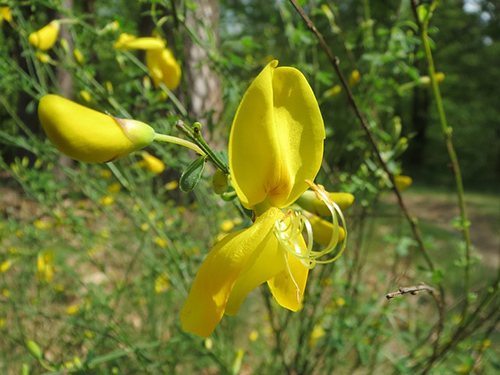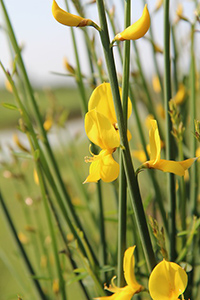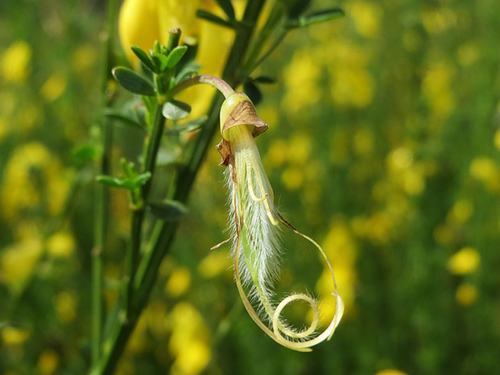Contents
The longest stems of the scotch broom plant have been used from ancient times to make brooms. However, only from the 19th century onwards has it been used in phytotherapy after it was discovered that it contained very active substances for the circulatory system.

Scotch Broom Plant Scientific Facts
- Other names: Broom, link, Irish broom.
- French: Genettier.
- Spanish: Retama negra.
- Environment: Roadsides and field borders in siliceous (never calcareous) soils of Central and Southern Europe. Naturalized in America.
- Description: Shrub of the Leguminosae family, growing up to two meters high, with yellow flowers and hairy fruits.
- Parts of the plant used medicinally: Young branches and flower buds.
Healing Properties and Warning

The whole plant, especially its branches, contains several alkaloids, the most outstanding of which is sparteine, which increases the strength of heart contractions and slows the heartbeat rate. They also provoke oxytocic action in the uterus (increase the strength of its contractions). The branches also contain amines that stimulate the autonomic nervous system (tyramine and dopamine) and have vasoconstrictive and hypertensive effects.
The flowers also contain flavonoids (scoparin), which make them diuretic. They are especially recommended in the case of edema due to coronary insufficiency and gout, nephrosis (albuminuria), nephritis, and kidney stones.
The scotch broom plant is used under medical supervision in coronary and circulatory disorders, including heart insufficiency (with similar effects to the foxglove plant), hypotension, arrhythmia, and tachycardia. It has also been used as a stimulant in labor.

WARNING! Do not exceed the recommended doses because this plant may increase blood pressure. People suffering from hypertension must avoid using it.
How to use Scotch Broom
- Infusion with 20-30g of flowers and/or leaves per liter of water, drinking from two to four cups daily.
- Dry extract: From 0.3 to 0.4g, three times a day.
DISCLAIMER: All content on this website is presented solely for educational and informational objectives. Do not rely on the information provided as a replacement for advice, diagnosis, or treatment from a qualified medical expert. If you are pregnant, nursing, or have any preexisting medical concerns, talk to your doctor before using any herbal or natural medicines.
REFERENCES
- George D. Pamplona-Roger, M.D. “Encyclopedia of Medicinal Plants.” George D. Pamplona-Roger, M.D. Encyclopedia of Medicinal Plants. Ed. Francesc X. Gelabert. Vols. 1 San Fernando de Henares: Editorial Safeliz, 2000. 225. Print. [scotch broom plant]
- Cytisus scoparius: A Plant of Medicinal Importance” – International Journal of Pharmacy & Life Sciences.
- “The Biological Activities of Cytisus scoparius” – Phytotherapy Research.
- “Traditional uses, phytochemistry, and pharmacology of Cytisus scoparius” – Journal of Ethnopharmacology.
- “Cytisus scoparius: A Review on Phytochemistry and Pharmacological Activities” – Pharmacognosy Reviews.
- “Medicinal plants used to treat urinary tract infections” – Fitoterapia.
- “Plants used to relieve menstrual pain and their biological activities: A review” – Phytotherapy Research.
- “Anti-inflammatory properties of Cytisus scoparius” – Pharmaceutical Biology.
